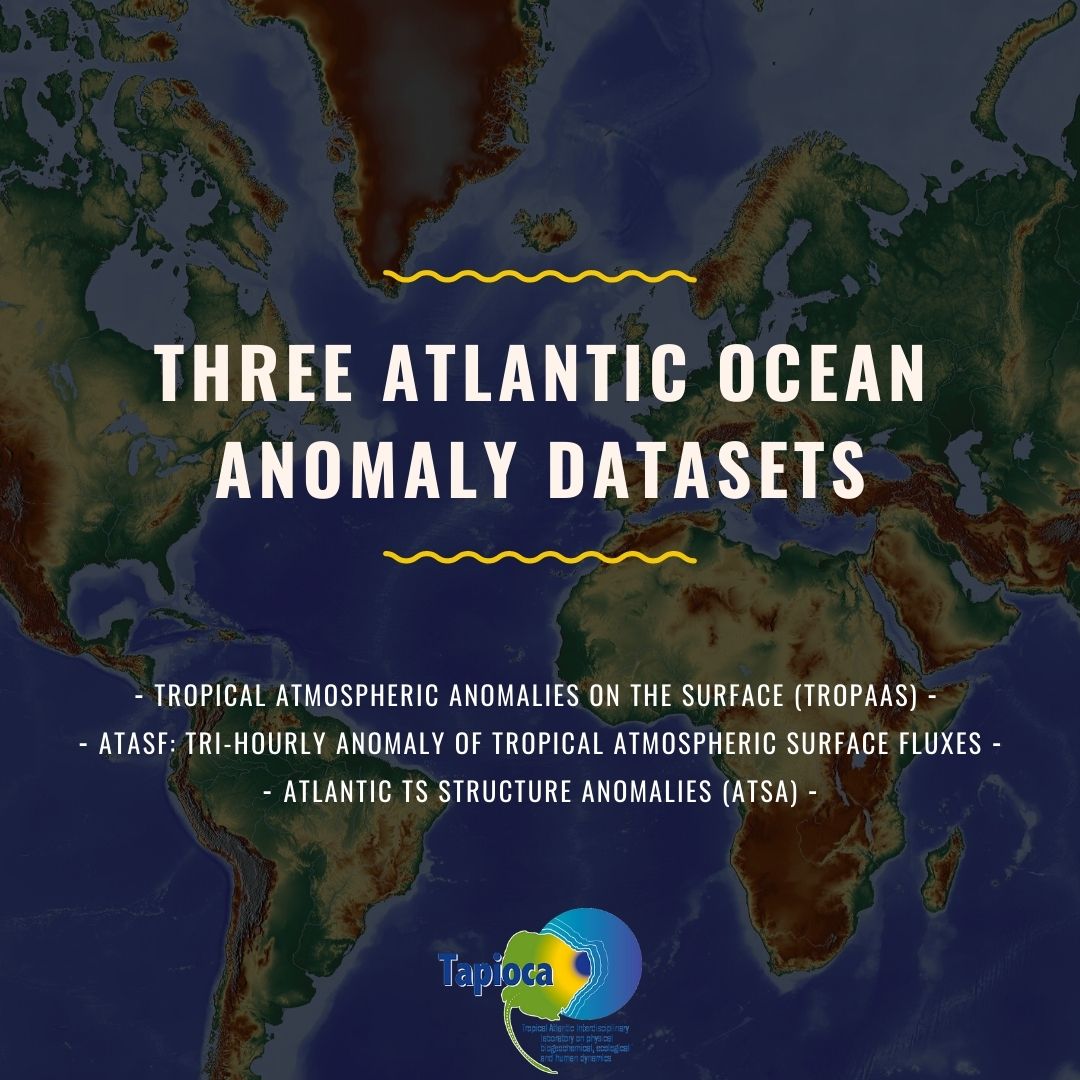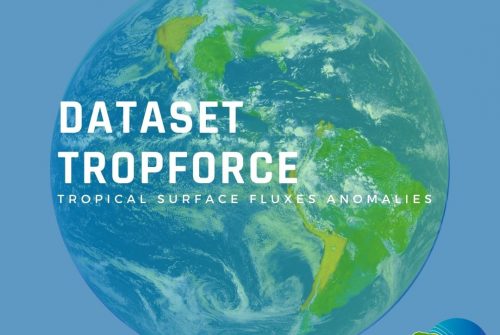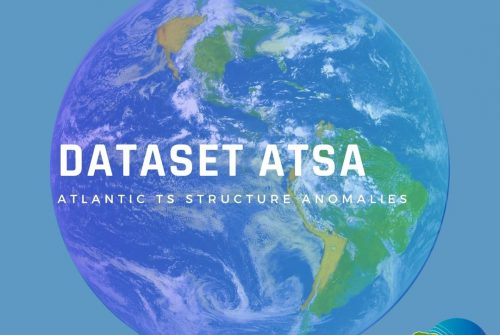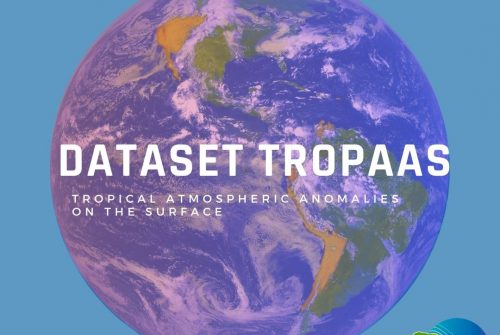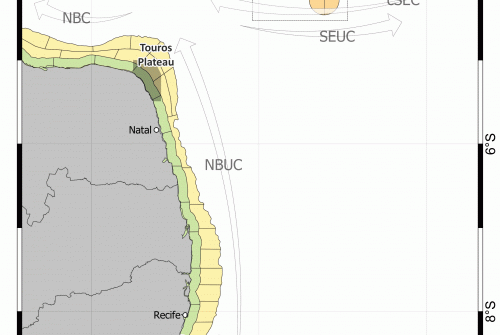Tropical Atmospheric Anomalies on the Surface (TROPAAS)
Name: Tropical Atmospheric Anomalies on the Surface (TROPAAS)
This dataset contains the monthly, daily and 6-hour anomalies of the wind speed at 10 m, air temperature at 10 m, incident long-wave radiation, incident solar radiation, atmospheric pressure at sea level, the specific humidity at 10 m and precipitation in the entire tropical region (180°W – 178.125°E / 31.4281°S - 31.4281°N), calculated from the CORE v2 dataset (Coordinated Ocean-ice Reference Experiments) experiment with the correction of CIAF v2 (Corrected Inter-Annual Forcing). Covers the period from 1948 to 2009.
Date: September 7, 2020
Authors(s):H. L. Varona; F. Hernandez; A. Bertrand; M. Araujo
Publisher: Zenodo
Keyword(s):
Long wave radiation Solar radiation Precipitation Air temperature Surface winds Tropic Sea Level Pressure Specific Humidity Anomaly Precipitation
License: Creative Commons Attribution 4.0 International
DOI: 10.5281/zenodo.5532992
ATASF: Tri-hourly anomaly of tropical atmospheric surface fluxes.
Name: ATASF:Tri-hourly anomaly of tropical atmospheric surface fluxes
ATASF dataset is a product that contains the tri-hourly surface anomalies of the entire tropical region (180°W - 178.125°E/33.3328°S – 31.4281°N) of the heat fluxes and of the incident and reflected radiation. These are calculated from 20th Century Reanalysis V2c data provided by the NOAA/OAR/ESRL PSD, Boulder, Colorado, USA, from their Web site at http://www.esrl.noaa.gov/psd/. This product contains the variables:
1. Tri-hourly convective precipitation rate (kg m^{-2} s)
2. Tri-hourly downward longwave radiation flux at surface (w m^{-2})
3. Tri-hourly downward solar radiation flux at surface (w m^{-2})
4. Tri-hourly upward longwave radiation flux at surface (w m^{-2})
5. Tri-hourly upward solar radiation flux at surface (w m^{-2})
6. Tri-hourly latent heat net flux at surface (w m^{-2})
7. Tri-hourly sensible heat net flux at surface (w m^{-2})
All these 3D grids have a period of time from 1851-01-01 00:00:00 to 2014-12-31 21:00:00, with a spatial resolution of 1.875 x 1.904732 degrees. The objective of this dataset is to facilitate researchers to study the anomalies of these 7 parameters on the ocean surface during the occurrence of short and medium duration physical processes such as low pressures, cold fronts, hurricanes and others.
Date: July 7, 2020
Authors(s): Zenodo
Keyword(s): Anomaly, Latent Heat, Sensible Heat, Long Wave Radiation, Solar Radiation, Convective Precipitation Rate, Hurricane, Cold Front, Low Pressure Gradients, Tropical Region, Ocean Surface
License: Creative Commons Attribution 4.0 International
DOI: 10.5281/zenodo.5527339
Atlantic TS Structure Anomalies (ATSA)
Name: Atlantic TS Structure Anomalies (ATSA)
This dataset contains the monthly anomalies of the TS structure of the Atlantic Ocean (75°W - 25°E / 80°S - 70°N) calculated from the product EN4 v4.2.2. There are 3 NetCDF files with the following name structure:
anom_EN.4.2.2.analysis.###_ATSA.nc
where ### specifies the correction applied based on the original data set:
l09 - Levitus et al. (2009) corrections.
g10 - Gouretski and Reseghetti (2010) XBT corrections and Gouretski and Cheng (2020) MBT corrections.
c13 - Cowley et al. (2013) XBT corrections and Levitus et al. (2009) MBT corrections.
The data prior to 1955-01-16 has been eliminated as it is a reconstruction of the series and is updated until 2021-04. These grids have a spatial resolution of 1°.
The authors express their thanks to the TRIATLAS project (Tropical and South Atlantic climate-based marine ecosystem predictions for sustainable management), to Tropical Atlantic Interdisciplinary Laboratory on physical, biogeochemical, ecological and human dynamics (IJL TAPIOCA) and the Brazilian Research Network on Global Climate Change (Rede CLIMA).
Date: September 29, 2021
Authors(s): Varona, Humberto L.; Hernandez, Fabrice; Bertrand, Arnaud; Araujo, Moacyr
License: Creative Commons Attribution 4.0 International
DOI: 10.17632/xnx23fmhhr.1
